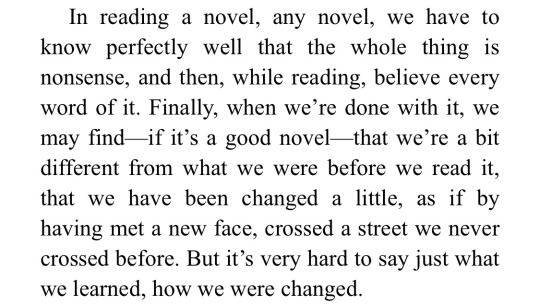#quotes by author
Explore tagged Tumblr posts
Text
I know adverbs are controversial, but "said softly" means something different than "whispered" and this is the hill I will die on.
#books#writing#writersnetwork#writers#writers on tumblr#writing community#author#writerscommunity#writers life#creative writing#writer#writers of tumblr#adverbs#requote#unknown quote
63K notes
·
View notes
Text

Writers when it's time to write the story no one forced them to come up with in the first place 🙄
#writers on tumblr#authors#writeblr#writers and poets#writing#bookish#books#prose#writerscommunity#spilled thoughts#on writing#creative writing#author#booklr#book blog#bookworm#writers block#poets and writers#writing funny#book quotes#books and reading#art#writer memes#writer life#writer problems#ao3 writer#ao3#ao3 fanfic#female writers#wrapped 2024
15K notes
·
View notes
Text
Still thinking about none houses left grief, and while I understand where people are coming from, "it took me out of the world" is just... Really not a relevant criticism here. Like, that line is SUPPOSED to be jarring. It is supposed to be kind of darkly funny, but the point isnt for you to laugh. Its not trying to be a punchline. The point of that line IS to "take you out of the world" because the point is that *this world isn't what you thought it was.*
#if it startled you that something so irreverant and lowbrow would come up in a high fantasy serious world#...then maybe ask yourself if this is really a serious high fantasy world#also i do think its just elitist that everyone complains about the tumblr references and not the word for word bible quotes#like maybe the author was trying to make a point about why you accept that catholicism is a cultural constant but not memes?#maybe take a step back and ask yourself what kind of cultural artifacts you think are important enough to be worth mentioning#tlt#htn#the locked tomb#harrow the ninth#tlt spoilers
5K notes
·
View notes
Text

Clementine von Radics, from “Letter from Anaïs Nin to Clementine von Radics”
Text ID: For women who are tied to the moon, love alone is not enough.
#clementine von radics#miscellanea#i see this quote so often incorrectly cited.#people have confused the name of the poem as being a letter from anaïs nin.#the poem itself is entirely dissimilar to anaïs nin which is silly.#so anyway!#a correction.#i’m not necessarily a fan of the author or this poem in it’s entirety but i do feel bad it’s often attributed to nin.#quote#poetry#america literature#lit
4K notes
·
View notes
Quote
You can spend minutes, hours, days, weeks, or even months over-analyzing a situation; trying to put the pieces together, justifying what could've, would've happened… or you can just leave the pieces on the floor and move on.
Tupac Shakur
#Tupac Shakur#thepersonalwords#Moving On#quotes#literature#life quotes#author quotes#prose#lit#spilled ink#writers on tumblr#writing inspiration#poets on tumblr
5K notes
·
View notes
Text
And I wondered what it was like to be chosen. I was never chosen. I was a maybe, a probably, sometimes even a definitely but never the one, never the chosen one.
Unknown
#don't know the author but this is so heartbreaking beautiful#writers on tumblr#spilled words#spilled thoughts#spilled ink#wolkenleere#spilled poetry#spilled quotes#poetry#love#poets on tumblr#a blog for the heartbroken#heartbroken#heartbreak#heartache#lovers#unrequited feelings#unrequited love#unrequited crush#written#writings#prose poetry#poetic
14K notes
·
View notes
Text
to say i miss you doesn't even begin to capture the despair your absence has brought me.
— mae s. (journal entry to the one i still love)
#breakup#sad quotes#writing#poem#quotes#soulmates#words#author#literature#books#female writers#heartache#sad poetry#grief journal#journal
5K notes
·
View notes
Text

Ursula K. Le Guin, “Author’s Note” from The Left Hand of Darkness
5K notes
·
View notes
Text
You can spend minutes, hours, days, weeks, or even months over-analyzing a situation; trying to put the pieces together, justifying what could've, would've happened… or you can just leave the pieces on the floor and move on. Tupac Shakur
#inspiring quotes#relationship quotes#relatable quotes#reading#art#romance quotes#quoteoftheday#quotes#shakespeare#spilled thoughts#thepersonalwords#Moving On#literature#life quotes#author quotes#prose#lit#spilled ink#writers on tumblr#writing inspiration#poets on tumblr
2K notes
·
View notes
Text

Good Grief by Brianna Pastor, available here!
#poem#poet#poetry#writer#queer poets on tumblr#queer author#queer writers#healing#healing poetry#mental health poetry#self worth#change your life#self growth#inspiring quotes#poetry books#sad poetry
987 notes
·
View notes
Text
Voldemort: Harry, I need you to give me my snake back
Harry: No! It’s my weekend, we have shared custody!
Voldemort: Nagini is not your child, she is a highly intelligent, extremely terrifying and deadly creature-
Nagini: boop the snoot
Harry: Aww, who’s my little danger noodle?
Voldemort:
Voldemort: What have you done to her
#harry potter#incorrect quotes#fanfic#harry potter is a menace#fanfiction#tom riddle#tomarry#voldemort#harrymort#ao3#tomarrymort#tom riddle jr#nagini#ao3 writer#ao3 author#shared custody of a very dangerous snake#harry acts like they’re a divorced couple
2K notes
·
View notes
Text



"A-Cheng, come over here."
#cqledit#The Untamed#Jiang Cheng#mdzs#myedit#hi hello I love making my faves suffer#pff though I cannot find the author of this quote#like it's linked with another quote often from what I see but it doesn't seem legit#if you know hmu
2K notes
·
View notes
Text

(x)
#archive of our own#ao3 stuff#ao3 quotes#archive of our own quotes#fanfic#fanfic quotes#funny#ao3#ao3 notes#authors be like#‘my baby I love them so much’#and then put them through literal hell#it’s me im authors#if this feels like a personal attack on you#that’s because it is
10K notes
·
View notes
Text




"We know what we are, but not what we may be."
- Ophelia in Shakespeare's Hamlet, Act 4, Scene 5
#academia#dark academia#bibliophile#dark aesthetic#book photography#dark and moody#authors#shakespeare#hamlet#theatre#academia aesthetic#dark academia aesthetic#sad thoughts#quotes#classic academia#classic quotes#deep qoute
733 notes
·
View notes
Text
"The Drunk lay in bed, having thoroughly quenched all anxieties with whiskey and food. It was a dulling embrace, an intimate numbness, and a paradoxical solution."
-The Drunk, The Gambler, and The Lover
A transgender novella about loneliness, isolation, and addiction, all stemming from the feeling of being unseen and misunderstood
(It's on Amazon, or you could just ask me for a free copy in the comments below. Currently looking for reviewers.)

#books#quotes#book quotes#trans#transgender#reading#writers#writers on tumblr#literature#lit#writeblr#bookblr#life quotes#life#spilled ink#spilled thoughts#spilled poetry#words#language#poety#prose#authors#free
716 notes
·
View notes
Quote
If you know the art of being happy with simple things, then you know the art of having maximum happiness with minimum effort!
Mehmet Murat ildan
#Mehmet Murat ildan#quotelr#quotes#literature#lit#art-of-happiness#happiness#happiness-quotes#happy#happy-life#happy-living#ildan-wisdom#ildan-wise-sayings#ildan-words#maximum-effort#mehmet-murat-ildan-quotations#mehmet-murat-ildan-quotes#minimum-effort#turkish-authors#turkish-literature#turkish-playwrights#turkish-quotations#turkish-quotes#turkish-wisdom-words#turkish-writers
2K notes
·
View notes